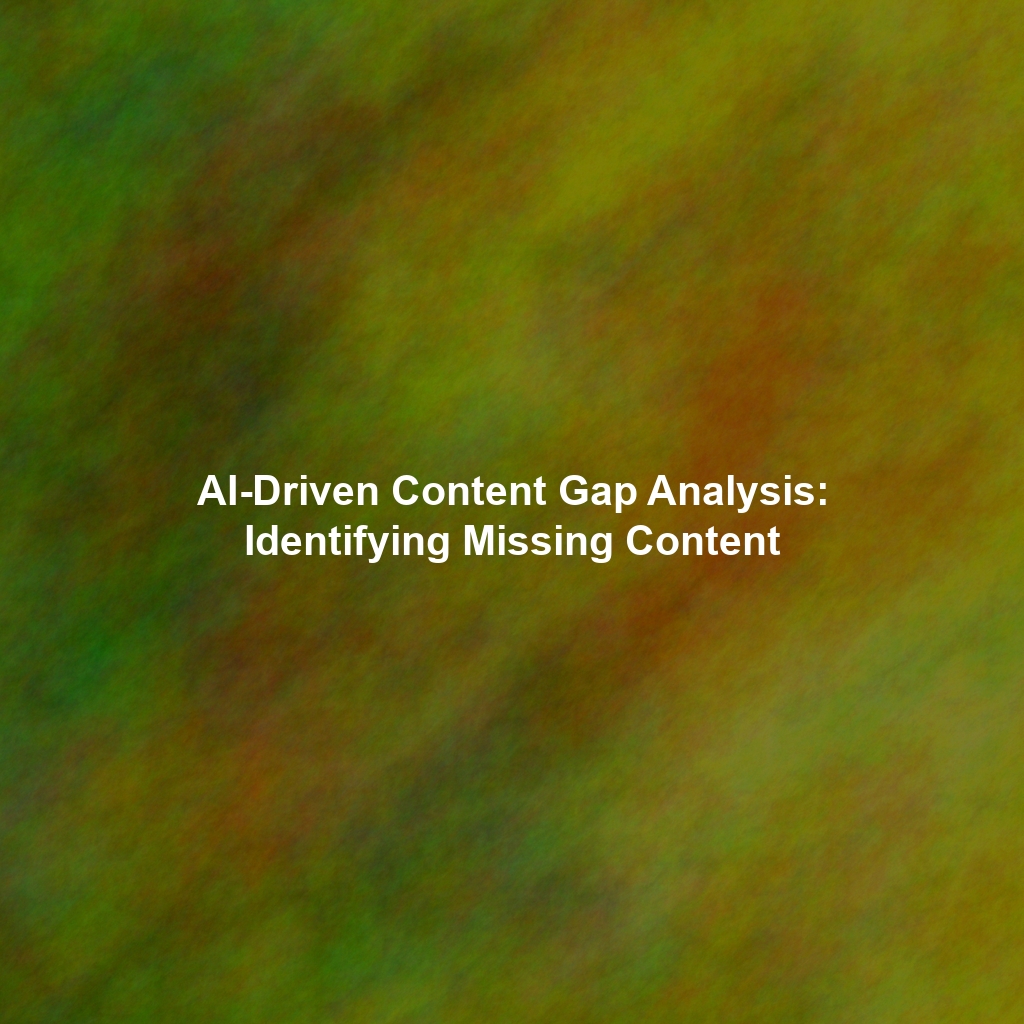The Problem: Training Data Bias and Its Consequences
AI language models, like GPT-3 and others, learn by analyzing massive datasets of text and code. These datasets are the foundation upon which the AI builds its understanding of language, style, and subject matter. However, if the training data is biased – meaning it disproportionately represents certain viewpoints, writing styles, or sources of information – the resulting AI will inherit and amplify that bias. This leads to several critical problems:
- Lack of Originality: AI models trained on biased data tend to reproduce existing ideas and arguments, rather than generating genuinely novel insights.
- Limited Perspective: The AI’s worldview is shaped by the data it was trained on, potentially excluding or marginalizing alternative viewpoints.
- Repetitive Content: Articles generated by these models often sound remarkably similar, using the same phrases, examples, and arguments.
- Missed Opportunities: By failing to explore new angles or challenge conventional wisdom, AI-generated content misses opportunities to engage readers and establish thought leadership.
For instance, imagine an AI model trained primarily on marketing blogs from the early 2010s. This model might consistently recommend outdated tactics, neglect the importance of mobile optimization, or fail to recognize the rise of social media marketing. The resulting blog articles, while grammatically correct, would be woefully irrelevant and ineffective.
Key Insight: AI doesn’t “think” or “understand” in the human sense. It identifies patterns in data and uses those patterns to generate text. If the patterns are biased, the output will be too.
Real-World Examples of Bias in AI-Generated Content
The effects of training data bias aren’t just theoretical; they’re visible in countless AI-generated blog articles across various industries. Here are a few examples based on observations within client engagements:
- Finance: AI-generated articles on investment strategies often overemphasize traditional asset classes like stocks and bonds, while neglecting alternative investments like cryptocurrency or real estate, particularly in emerging markets. This bias stems from the fact that much of the financial data used to train these models comes from established financial institutions, which tend to favor traditional investments.
- Healthcare: AI-powered content on medical conditions may primarily focus on symptoms and treatments relevant to specific demographics, such as older adults or specific ethnic groups, neglecting the unique experiences and needs of other populations. This is often because clinical trials and medical research data are disproportionately focused on certain groups, leading to a skewed understanding of disease presentation and treatment efficacy across diverse populations.
- Technology: Blog posts about software development trends often prioritize popular programming languages and frameworks, while overlooking niche languages or emerging technologies that could offer significant advantages in specific contexts. This is due to the abundance of online resources and documentation available for widely used technologies, which creates a self-reinforcing cycle of popularity and visibility.
- Marketing: AI-created content discussing SEO might exclusively reference established SEO practices while neglecting the newer E-E-A-T (Experience, Expertise, Authoritativeness, and Trustworthiness) guidelines by Google. Or may rely on older “keyword stuffing” approaches that have been heavily penalized by Google and no longer provide any value.
I saw this firsthand when consulting for a startup in the sustainable energy sector. They were using an AI tool to generate blog content about renewable energy technologies. The AI consistently produced articles that focused on solar and wind power, while completely ignoring geothermal energy, despite its significant potential in certain regions. Upon investigation, we discovered that the training data used by the AI heavily favored solar and wind energy sources, reflecting the dominant narrative in the renewable energy discourse.
Identifying and Mitigating Bias in Training Data
Addressing the problem of training data bias requires a multi-faceted approach that focuses on both identifying and mitigating bias in the data itself and refining the way AI models are trained. Here are some key strategies:
1. Data Auditing and Curation
The first step is to thoroughly audit the training data to identify potential sources of bias. This involves analyzing the data’s composition, identifying underrepresented groups or perspectives, and evaluating the quality and reliability of the sources. Curation is the process of cleaning, filtering, and balancing the dataset to address these biases.
Here’s how to approach data auditing:
- Demographic Analysis: Analyze the demographic representation in the data. Are certain groups overrepresented or underrepresented?
- Source Evaluation: Assess the credibility and bias of the data sources. Are the sources reliable and objective?
- Content Analysis: Examine the content for biased language, stereotypes, or discriminatory viewpoints.
For example, if you’re training an AI model to generate content about leadership, ensure that the training data includes examples of leadership from diverse cultural backgrounds, genders, and leadership styles. Don’t just rely on the traditional “CEO” archetype from Western business literature.
2. Data Augmentation and Synthesis
When it’s difficult or impossible to find sufficient unbiased data, consider augmenting the existing data with synthetic data. This involves creating new data points that represent underrepresented groups or perspectives. This approach can be particularly useful for addressing biases related to rare events or marginalized communities.
Strategies for data augmentation include:
- Translation and Adaptation: Translating existing content into different languages and adapting it to different cultural contexts can introduce new perspectives.
- Scenario Generation: Creating hypothetical scenarios that represent diverse situations and viewpoints can help the AI learn to handle a wider range of inputs.
- Back Translation: Translate from English to another language then back to English. This can alter the phrasing and make the output more original.
However, exercise caution when using synthetic data, as it can inadvertently introduce new biases if not carefully designed and validated. It’s also important to ensure it’s accurate.
3. Algorithmic Bias Mitigation Techniques
Even with careful data curation, some bias may persist in the training data. Fortunately, there are several algorithmic techniques that can help mitigate bias during the model training process. These techniques aim to make the model more fair and equitable, even when trained on biased data.
Some common algorithmic bias mitigation techniques include:
- Adversarial Training: Training the AI model to identify and correct its own biases.
- Regularization: Adding penalties to the model’s objective function to discourage biased predictions.
- Re-weighting: Assigning different weights to different data points to compensate for imbalances in the training data.
4. Model Evaluation and Monitoring
After training the AI model, it’s essential to evaluate its performance across different subgroups to identify any remaining biases. This involves measuring the model’s accuracy, fairness, and other relevant metrics for each subgroup. Continuously monitor the model’s output in real-world settings and retrain it periodically to address any emerging biases.
Key metrics for evaluating model bias include:
- Accuracy Parity: Ensuring that the model’s accuracy is similar across different subgroups.
- False Positive Rate Parity: Ensuring that the model’s false positive rate is similar across different subgroups.
- False Negative Rate Parity: Ensuring that the model’s false negative rate is similar across different subgroups.
Regularly audit the AI’s output for biased language, stereotypes, or discriminatory viewpoints. Encourage feedback from users and stakeholders to identify potential issues that may have been missed during the evaluation process.
5. Focus on Prompt Engineering and Contextual Awareness
The way you prompt an AI model significantly impacts the quality and originality of its output. Instead of simply asking generic questions, provide the AI with detailed context, specific instructions, and clear guidelines for the desired tone and style. Encourage the AI to explore different perspectives, challenge assumptions, and provide evidence-based arguments.
Here are some tips for effective prompt engineering:
- Provide Clear Instructions: Specify the desired length, tone, style, and target audience for the content.
- Offer Contextual Information: Provide the AI with relevant background information, data, and research to inform its writing.
- Encourage Critical Thinking: Ask the AI to analyze different perspectives, identify potential biases, and provide evidence-based arguments.
- Iterate and Refine: Experiment with different prompts and evaluate the AI’s output to identify the most effective strategies.
For instance, instead of simply asking the AI to “write a blog post about climate change,” try providing a more specific prompt like this: “Write a 1,000-word blog post about the impact of climate change on coastal communities in developing countries, focusing on the social and economic consequences. Include specific examples of how these communities are adapting to the challenges of climate change, and propose policy recommendations for supporting their resilience.”
Key Insight: Prompt engineering is an iterative process. Experiment with different prompts to see what works best for your specific needs and desired output.
Breaking Free from the Algorithmic Echo Chamber: Practical Strategies for Original Content
Mitigating bias is crucial, but it’s only one part of the solution. To create truly original and engaging AI-generated content, you need to go beyond simply addressing bias and focus on fostering creativity, critical thinking, and a unique voice.
1. Encourage Exploration and Experimentation
Don’t limit the AI to simply regurgitating existing information. Encourage it to explore new ideas, challenge assumptions, and propose innovative solutions. This can be achieved by providing the AI with open-ended prompts, asking it to brainstorm different scenarios, or challenging it to solve complex problems.
For example, instead of asking the AI to “write a blog post about the benefits of cloud computing,” try asking it to “brainstorm five innovative ways that cloud computing can be used to improve the efficiency of small businesses.”
2. Inject Human Expertise and Perspective
AI-generated content should never be used as a substitute for human expertise and perspective. Instead, use AI as a tool to augment human creativity and efficiency. Review and edit the AI’s output to ensure that it aligns with your brand’s voice, values, and expertise. Add your own insights, anecdotes, and experiences to make the content more engaging and relatable.
I often recommend my clients use AI to generate a first draft of a blog post, then have a subject matter expert review and refine the content. This ensures that the final product is both informative and insightful.
3. Focus on Storytelling and Narrative
People connect with stories more readily than with dry facts and figures. Use storytelling to make your AI-generated content more engaging and memorable. Incorporate real-world examples, case studies, and personal anecdotes to illustrate your points and bring your message to life.
Instead of simply stating that “cloud computing can improve the efficiency of small businesses,” tell a story about a small business that successfully implemented cloud computing and the positive impact it had on their operations. For instance, describe how a local bakery moved their operations to the cloud, streamlined order processing, and significantly reduced operational costs. Detail how these positive changes helped them to open a second location and serve more customers within the community.
4. Cultivate a Unique Voice and Style
Differentiate your AI-generated content by developing a unique voice and style that reflects your brand’s personality and values. Experiment with different writing styles, tones, and formats to find what resonates best with your target audience. Don’t be afraid to break the mold and challenge conventional wisdom.
Consider defining a specific persona for your brand and instructing the AI to write in the style of that persona. For example, if your brand is known for being humorous and irreverent, instruct the AI to write in a witty and sarcastic tone.
5. Continuously Learn and Adapt
The field of AI is rapidly evolving, and new techniques for mitigating bias and fostering creativity are constantly emerging. Stay up-to-date on the latest advancements in AI and adapt your content creation strategies accordingly. Continuously monitor the performance of your AI-generated content and make adjustments as needed.
Attend industry conferences, read research papers, and experiment with new AI tools and techniques to stay ahead of the curve. Be willing to adapt your content creation process as the technology evolves.
Key Takeaway: Don’t treat AI as a replacement for human creativity, but as a powerful tool to augment your content creation process and unlock new possibilities.
SEO Considerations for AI-Generated Content
While originality and user engagement are paramount, don’t forget about SEO. Optimizing your AI-generated content for search engines is crucial for driving traffic and reaching a wider audience. Here are some key SEO considerations:
- Keyword Research: Conduct thorough keyword research to identify the terms and phrases that your target audience is searching for.
- On-Page Optimization: Optimize your content for relevant keywords, including the title tag, meta description, headings, and body text.
- Link Building: Build high-quality backlinks from reputable websites to improve your website’s authority and ranking.
- Content Quality: Ensure that your content is well-written, informative, and engaging. Avoid keyword stuffing and other black hat SEO tactics.
- Mobile Optimization: Make sure your website is mobile-friendly and provides a seamless user experience on all devices.
It’s important to note that Google’s algorithm is constantly evolving, and the rules of SEO are always changing. Stay up-to-date on the latest SEO best practices and adapt your strategies accordingly. Focus on creating high-quality, user-friendly content that provides value to your audience. If the content is truly helpful, then E-E-A-T requirements will generally follow.
The Future of AI and Content Creation
AI is poised to play an increasingly significant role in content creation, but it’s crucial to approach this technology with a critical and discerning eye. By understanding the limitations of AI, mitigating bias in training data, and focusing on originality, creativity, and human expertise, we can harness the power of AI to create truly engaging and impactful content. The future of content creation is not about replacing human writers with AI, but about empowering them to be more creative, efficient, and effective.
Are you ready to transform your content strategy and leverage AI for success? Contact us today to learn more about how we can help you create engaging, original, and SEO-optimized content that drives results.
This article was optimized and published by Content Hurricane.
 Skip to content
Skip to content

